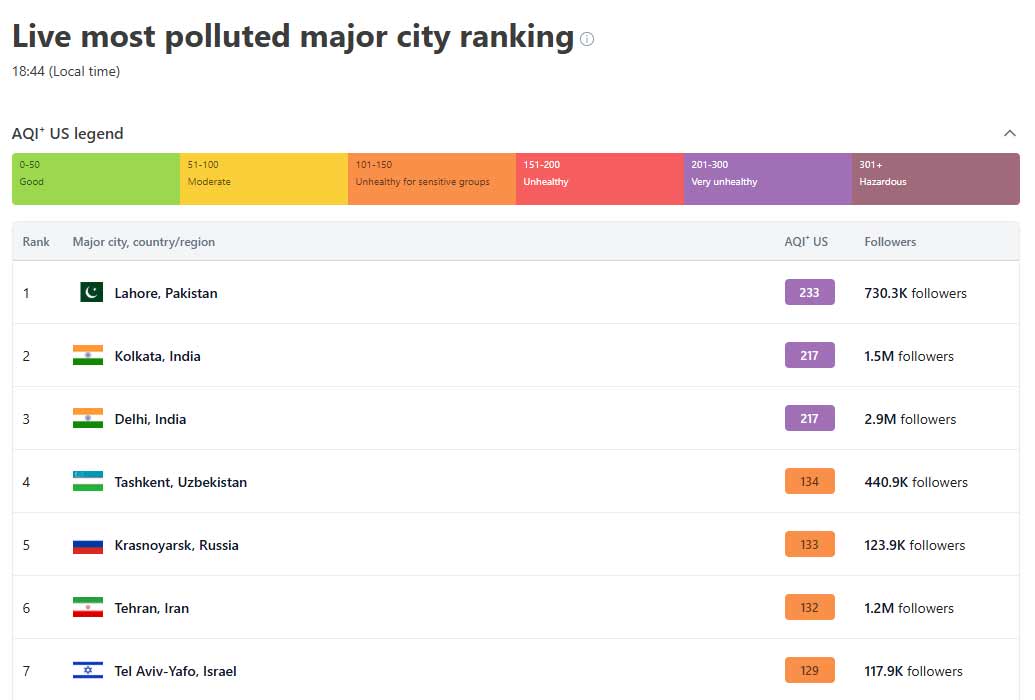
- Court summons DC Lahore over poor enforcement.
- Orders crackdown on smoke-emitting vehicles.
- Criticises failure to implement restaurant timing rules.
The Lahore High Court (LHC) on Monday expressed serious concern over rising air pollution and showed dissatisfaction with the Punjab government’s anti-smog measures.
During the hearing of a set of petitions on environmental issues, Justice Shahid Kareem remarked that around 70% of Lahore’s pollution is caused by transport, urging that instead of blaming others, “we must fix ourselves.”
The court ordered strict action against smoke-emitting vehicles and summoned the Deputy Commissioner of Lahore to appear in person.
Justice Kareem also questioned the effectiveness of anti-smog guns, asking what purpose they serve in the current situation.
The bench also expressed displeasure over the failure to enforce restaurant closing hours and demanded improved compliance with the court’s earlier orders.
The toxic haze, a result of a combination of vehicle emissions, industrial pollutants, seasonal crop burning, and stagnant weather conditions, has shrouded these cities in thick smog, reducing visibility and causing widespread respiratory problems.
According to a global environmental website, Lahore on Monday ranked the most polluted city in the world with an Air Quality Index (AQI) of 233.

Senior Punjab Minister Maryam Aurangzeb said the government continues strict action against the use of substandard fuel and garbage burning, adding that Lahore’s AQI has now dropped below 350 due to coordinated policies and monitoring.
The authorities in Punjab have blamed the issue on air coming from India and other parts, which is affecting the air quality in various parts of the province.
The toxic haze has left much of Punjab and northern India shrouded for days, reducing visibility and triggering widespread health complaints such as throat irritation, coughing, and breathing difficulties.
Public health experts have advised residents to limit outdoor activities and wear protective masks when necessary.
The severe air quality coincides with the onset of winter, when cooler temperatures, stagnant winds, and emissions from vehicles, factories, and crop burning trap pollutants close to the ground across the plains of Punjab.
Every winter, a mix of low-grade fuel emissions from factories and vehicles, exacerbated by seasonal crop burn-off by farmers, blankets much of Punjab.
Breathing toxic air has catastrophic health consequences, with the WHO warning that strokes, heart disease, lung cancer, and respiratory diseases can be triggered by prolonged exposure.